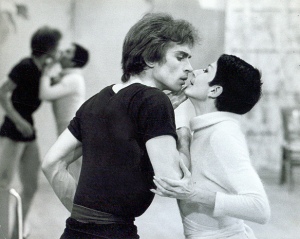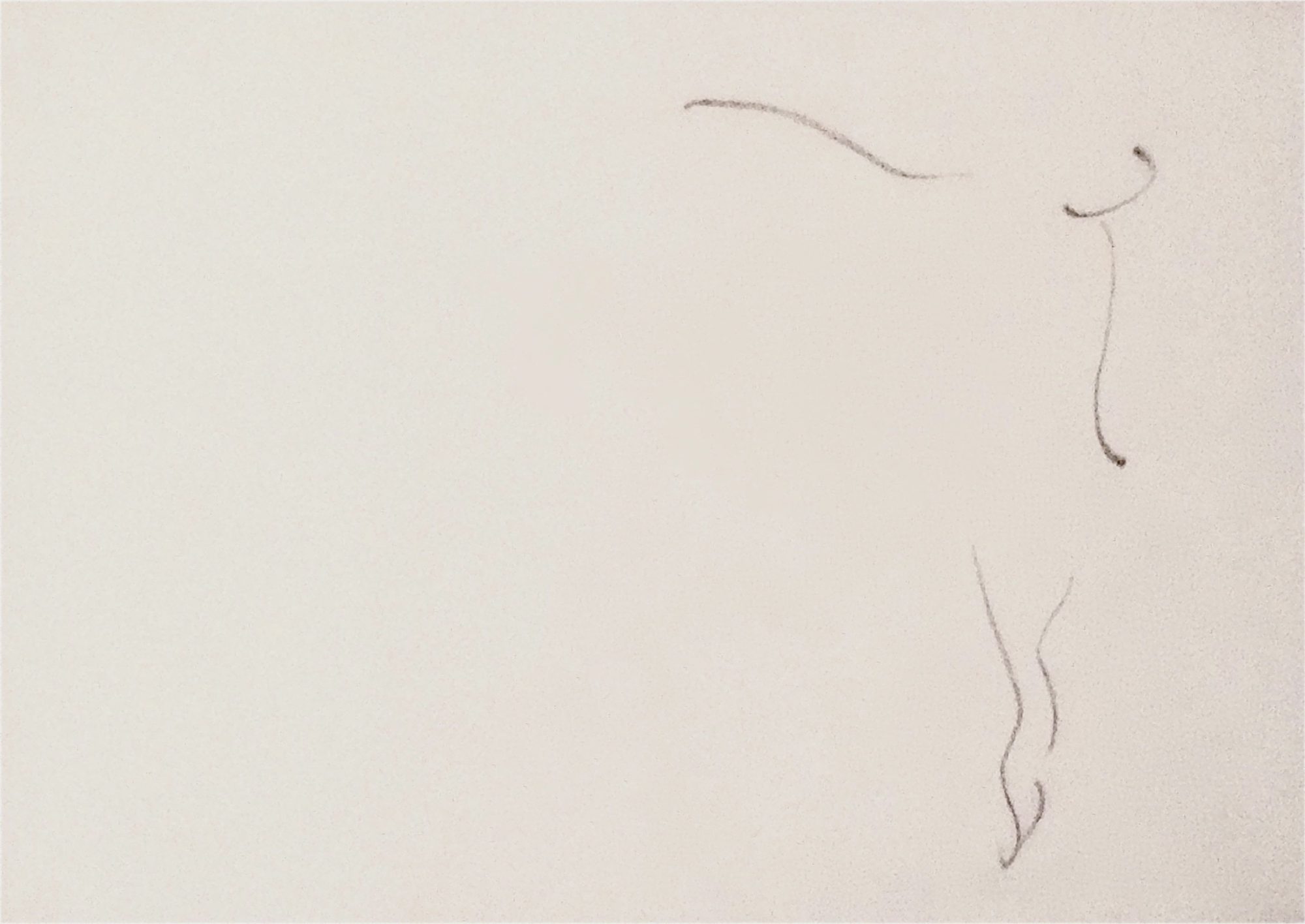Era afrancesado, pero nada petimetre. Parecía exquisito, seductor, ambiguo, impactante, listo, buen comunicador, superficial a ratos. Un francés chispeante que lo mismo coreografiaba para el Mariinsky que para el Folies Bergere.
 Roland Petit tenía previsto montar un par de coreografías para English National Ballet dentro de unas semanas; qué suerte para uno, en cierto modo, morirse por sorpresa. Quise poner un enlace en mi muro de facebook para homenajearle y sólo del susto no supe por dónde empezar a buscar. Al final, pegué su Le jeune homme et la mort. Era una obviedad, pero tampoco sabía ir de listilla en esos momentos.
Roland Petit tenía previsto montar un par de coreografías para English National Ballet dentro de unas semanas; qué suerte para uno, en cierto modo, morirse por sorpresa. Quise poner un enlace en mi muro de facebook para homenajearle y sólo del susto no supe por dónde empezar a buscar. Al final, pegué su Le jeune homme et la mort. Era una obviedad, pero tampoco sabía ir de listilla en esos momentos.
Estuve muy, muy tentada a compartir con mis amigos el espléndido número musical que creó para las piernas de Zizi y que me fascina: Mon truc en plumes. Al final lo he puesto en twitter, no pude contenerme. Petit contaba que un buen día, su mujer le llegó con esa canción pidiéndole entusiasmada que se la coreografiara, y que él, horrorizado, no tuvo más remedio que complacerla. Salió Zizi Jeanmaire con su minivestido de Yves Saint Laurent e hizo historia cantando con unos abanicos de plumas.
Con la misma superficialidad, Roland Petit confesaba que cuando hizo su Carmen no había ni siquiera visto la ópera; que sólo leyó el libreto y decidió hacer el ballet; tembló el mundo cuando apareció Zizi fumando en una cama al inicio del pas de deux. Zizi, siempre ella; ella y sus piernas. Ella y su sonrisa, su pelo corto y su mirada entre cómplice y maquiavélica.
Le jeune homme et la mort ha colocado a Roland Petit en los altares de la coreografía; le dio mil vueltas a la idea de Jean Cocteau y fue recortando poco a poco la falda de la bailarina (hasta Karinska metió la mano en ese traje) y el tirante del pantalón del hombre, adecuando cada paso e incluso la versión musical a cada uno de los elencos que lo interpretaron. De todos ellos, me quedo con la teatralidad casi absurda de Stokowsky y la fuerza animal de Baryshnikov, el que más se acerca al portento Babilée. Cuánto les pesa esa mesa, esa silla, esa vida, a los pobres. Cuánta contención y cuánto miedo pasan hasta que la mujer les expulsa del mundo.
 Me encanta el paso a dos de Proust, y el de Notre-Dame, y el de Thais. Y el fantástico baile de Coppelius con la muñeca en Coppélia. Y ese solo de tap-boxeador que hacía Denis Ganio. Me gustan muchas obras de Roland Petit, demasiadas para enumerarlas. Pero hay una cosa que me admira: que saliera andando de la Ópera de París con su mujer de la mano, ambos sin mirar atrás, y que la compañía siguiera considerándole uno más en la casa hasta el día de su muerte. Quizás fuera porque él no opinaba, como Béjart, que l’Opéra era “la tumba al bailarín desconocido”. Era un francés afrancesado, pero hacía lo que le venía en gana en su propio país.
Me encanta el paso a dos de Proust, y el de Notre-Dame, y el de Thais. Y el fantástico baile de Coppelius con la muñeca en Coppélia. Y ese solo de tap-boxeador que hacía Denis Ganio. Me gustan muchas obras de Roland Petit, demasiadas para enumerarlas. Pero hay una cosa que me admira: que saliera andando de la Ópera de París con su mujer de la mano, ambos sin mirar atrás, y que la compañía siguiera considerándole uno más en la casa hasta el día de su muerte. Quizás fuera porque él no opinaba, como Béjart, que l’Opéra era “la tumba al bailarín desconocido”. Era un francés afrancesado, pero hacía lo que le venía en gana en su propio país.
He was veryvery French, but not a petimetre. He looked refined, seductive, ambiguous, powerful, smart, good communicator, superficial at times. A sparkling French choreographer who could work for the Mariinsky Ballet as well as for the Folies Bergere.
Roland Petit was supossed to stage some of his ballets for the English National Ballet in a couple of weeks; how lucky, somehow, to die by surprise. I tried to publish a link on my facebook wall just to honor him, but I was so shocked that I didn’t know which one to choose among all his works. Finally, I put his Le jeune homme et la mort. It was very predictable, but it was not the right moment to be too clever by half.
I was very, very tempte d to share with my friends a splendid musical number created for the legs of Zizi that fascinates me: Mon truc in plumes. At the end I put it on twitter, I could not resist. Petit used to tell that one day, his wife came up with that song, asking him with enthusiasm to make a choreography for her, and how he, horrified, had no choice but to please her. Zizi Jeanmaire went out to the stage in her Yves Saint Laurent minidress and made history singing among several feather fans.
d to share with my friends a splendid musical number created for the legs of Zizi that fascinates me: Mon truc in plumes. At the end I put it on twitter, I could not resist. Petit used to tell that one day, his wife came up with that song, asking him with enthusiasm to make a choreography for her, and how he, horrified, had no choice but to please her. Zizi Jeanmaire went out to the stage in her Yves Saint Laurent minidress and made history singing among several feather fans.
With the same superficiality, Roland Petit also admited that he had not even seen the opera Carmen when he choreographed his ballet; he just read the script and decided to make the piece. He shook the world when Zizi appeared smoking in bed at the beginning of the pas de deux. Zizi, always her; Zizi and her legs, Zizi and her smile, her short hair and her gaze, between conspiratorial and Machiavellian.
Le jeune homme et la mort took Roland Petit to the altar of the choreographers. He thought very mucho about Jean Cocteau’s idea; little by little, he cut the skirt of the girl (even Karinska made changes to the dress) and the strapping of the man’s pants, adjusting each step and even the musical version to each dancer of the several casts who performed the ballet through the years. I prefer the almost absurd theatricality of Stokowski and the animal force of Baryshnikov, the closest to the wonderful Babilée. How heavy the table, the chair, their lives, are. How much containment and how much fear they suffer until the girl throw them away from the world.
I love the pas de deux from of Proust, and from Notre Dame, and from Thais. And the fantastic dance of Coppelius with the doll in Coppélia. And the tap-boxing solo that denis Ganio danced. I like many works by Roland Petit, they’re too many to make a list. But one thing astonishes me: he left the Paris Opera with his wife -they never looked back- and the company still considered him as one of them until the day he died. Maybe it was because he didn’t say, as Béjart did, that l’Opéra was “the tomb of the unknown dancer.” He was French and a Francophile, but he managed to do anything he wished in his own country.
